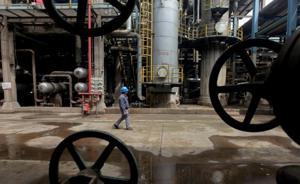Teapot refineries slow China’s crude oil stockpiling
(Reuters) China's strategic crude oil stockpiling slowed in the first half of 2016 because of delays in facility construction, resulting in more imports flowing to the country's independent refineries, analysts said.
The competition highlights the increasing buying power of the independent plants, known as teapots. The slowdown in Chinese stockpiling likely limited Chinese crude demand in the first half of the year, but that may change as new strategic petroleum reserve (SPR) sites come online later in 2016 and early 2017.
Beijing-based consultancy SIA Energy estimates that the government's stockpile reached 35.6 MM tons, or 260 MMbbl by the end of July, an average fill rate of 180 Mbpd. That's down 25% from government data for the second half of 2015.
Several factors, including delays in new tankages and the difficult engineering required for underground caverns, contributed to the slowdown. But there was also competition from the teapots that have outpaced SPR buying.
"The role for SPR has been eclipsed by teapots for this year's crude oil imports. Teapots (have) become a much larger factor," said Sengyick Tee, senior director of oil research with Beijing-based consultancy SIA Energy.
Thomson Reuters Supply Chain & Commodities Research estimates the fill rate was even slower, at 130 Mbpd in the first eight months of 2016.
China's National Bureau of Statistics gave a rare update on the size of the strategic reserve, one of the largest in the world. The country was storing 31.97 MM tons, or 233 MMbbl, at the start of 2016, equal to about 33 days of net crude imports, it said. The update included both strategic and some commercial stockpiling.
That marked a 43 MMbbl build during the second half of 2015 and suggested a fill rate of around 240 Mbpd.
Buying in the first half of 2016 dropped from last year even as prices crashed to $27/bbl, their lowest in more than a decade, in January, meaning China missed a chance to scoop up cheap oil.
China will likely add as much as 150 MMbbl to the SPR in 2016 but there could be some slippage to 2017 as tanks are slow to come online, said Michal Meidan, Asia analyst at Energy Aspects.
While many western countries make reserve data public, China rarely gives detailed information on its oil reserves or locations.
Analysts have been tracking China's SPR buying to measure crude demand growth from the world's largest oil user after the United States.
Further clouding the demand calculations, China granted crude import licenses to 16 teapot refiners starting in 2015 and they now account for more than one-tenth of China's crude oil imports.
Teapots' oil purchases are likely to hit 49.5 MM tons for all of 2016, or nearly 1 MMbpd, according to SIA.
The purchases contrasted with near flat imports by state refiners PetroChina and Sinopec, which also have also made rare cuts in refinery throughput.
Reporting by Chen Aizhu; Additional reporting by Meng Meng; Editing by Josephine Mason and Christian Schmollinger







Comments